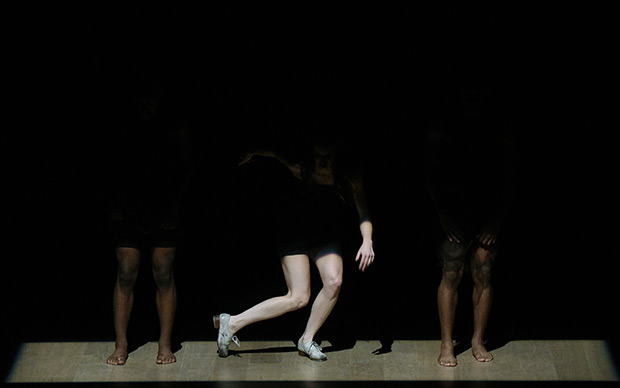
© Kevin Parry. (Click image for larger version)
Dorrance Dance
Jungle Blues, Three to One, Myelination
★★★★★
Berkeley, Zellerbach Hall
27 October 2017
www.dorrancedance.com
www.calperformances.org
Dorrance Dance is received with such universal enthusiasm and love that reviewing them feels like an exercise in redundancy, like piling on to a scrum that’s already 30 players deep. The outcome is pretty much assured, and whatever weight you add won’t make much of a difference.
Dorrance and her group of tap-dancing, breaking, music-making artists are wonderful, and there are few accolades that haven’t already been applied by critics, audiences and the establishment, which has endowed leader Michelle Dorrance everything from a 2015 MacArthur “Genius” grant to a 2012 Princess Grace Award and fellowships galore.
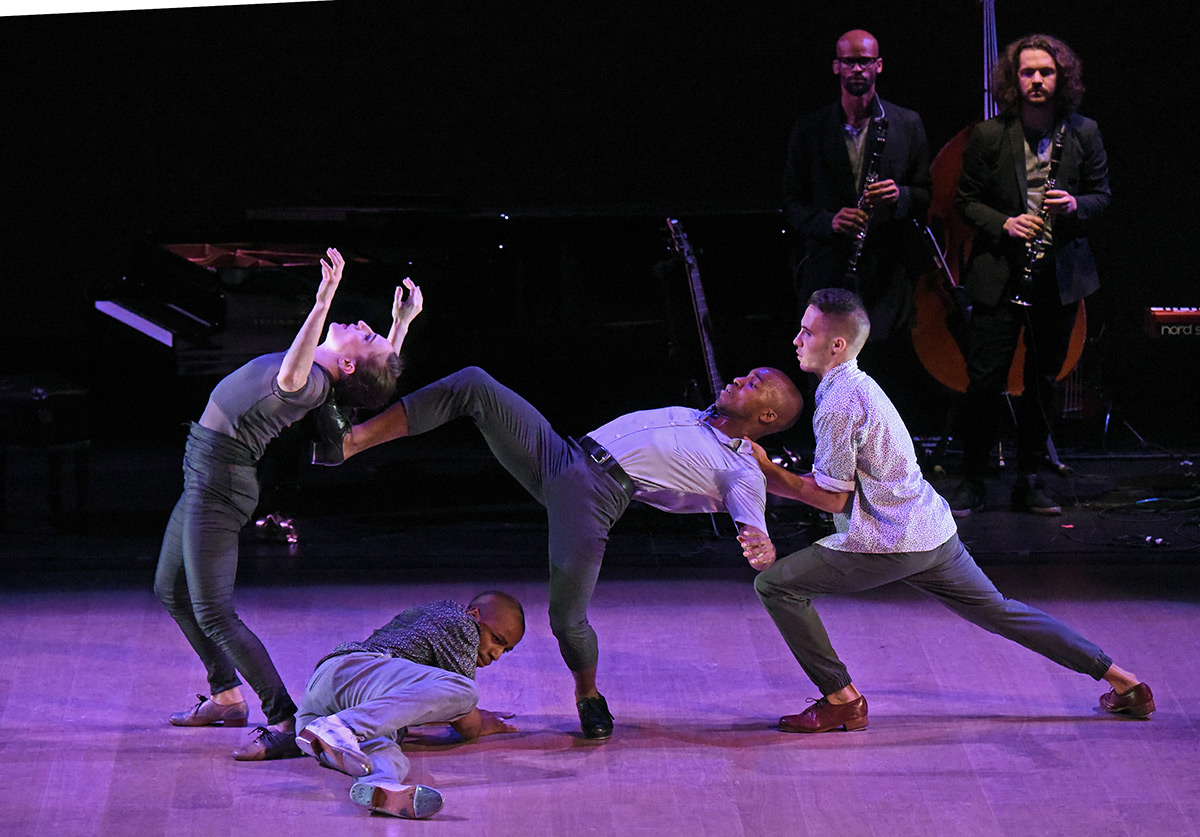
© Kevin Parry. (Click image for larger version)
Sitting in the stalls, the temptation to put down your pen and pad and just enjoy them is close to irresistible. Nevertheless, I persisted in scrawling notes throughout Dorrance Dance’s performance at Cal Performance’s Zellerbach Hall, where the company presented its currently-touring production of Jungle Blues, Three to One and Myelination, all choreographed by Dorrance. The first two date from 2012 and 2011; the 2017 update of Myelination, a two-year-old piece, was co-sponsored by Cal Performances.
The 9-minute, full-company Jungle Blues, set to Branford Marsalis Quartet’s recording of the 1927 Jelly Roll Morton song, conjures a smoky speakeasy where friends have gathered on a balmy summer night. Fast and slow tapping ride the peaks and valleys of the music, while gyrating line dances, Elizabeth Burke and Nicholas Van Young’s seductive duet and Byron Tittle’s smooth modernism evoke the unhindered expression and sexuality of dancing in forbidden clubs, outside the strictures of conventional society.

© Kevin Parry. (Click image for larger version)
Three to One shows tap’s postmodern possibilities in 7.5 minutes. Tittle and Matthew “Megawatt” West flank Dorrance, all wrapped in black tulle from chest to mid-thigh. Electronic music by Aphex Twin and Thom Yorke is the backdrop for their abstract trio, cut loose from recognizable time and place and floating in an atmosphere of light designed by Kathy Kaufmann. Their breathtakingly fast taps alternate with the supple isolations of hip-hop; the men slip away and eventually Dorrance is absorbed into the void.
Bigger in scale and more traditionally theatrical, Myelination reunites the full company in vignettes that plumb a spectrum of emotions. Elation as well as distress animate Ephrat “Bounce” Asherie’s hightop-shod breaking, and Dorrance and Tittle’s pushmi-pullyu duet touches on ecstasy and impermanence.
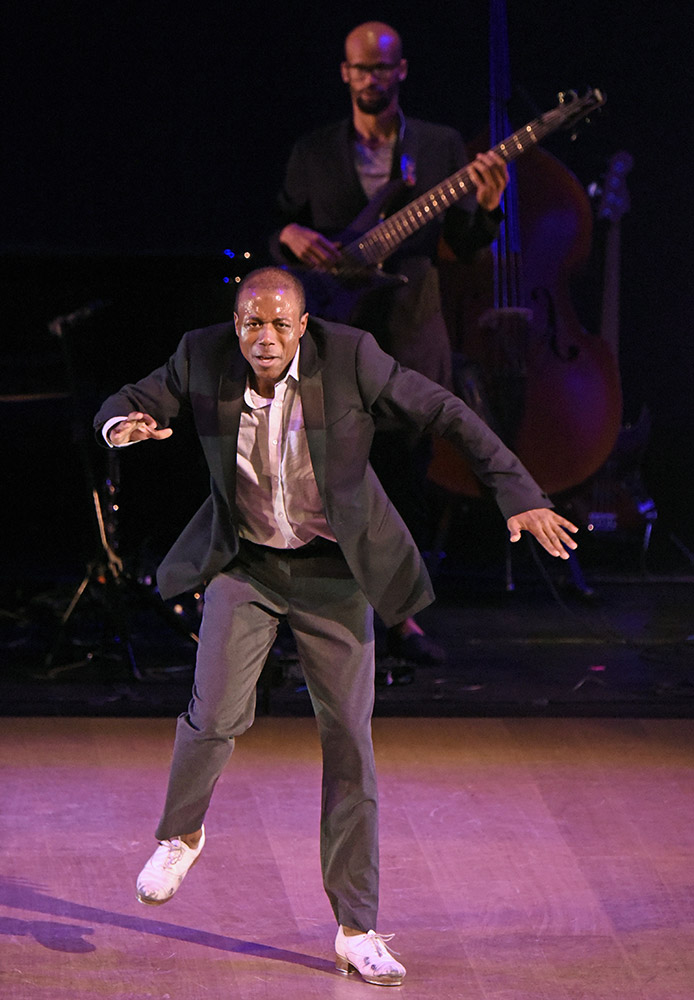
© Kevin Parry. (Click image for larger version)
Warren Craft grapples with demons in a spastic solo that mixes tapping and floorwork; he scrapes, slides and drags his tap shoes on the floor like percussion instruments. He really does play along with the live prog-jazz band (co-led by Dorrance’s brother, Donovan), joining in on guitar at one point, while Van Young hops on and off the drum kit.
Harmony is restored in the end, but you arrive there only after a sometimes harrowing, thoroughly exhilarating journey (billed as 30-ish minutes but blissfully longer here because of improvisations). Christopher Broughton, Gabe Winns Ortiz and Claudia Rahardjanoto complete the outstanding ensemble.

© Kevin Parry. (Click image for larger version)
Dorrance and her company are billed as innovators in tap, and some of them have trained with the greats. But their work is essentially genre-less. They incorporate rhythm and Broadway tap styles, but adhere to neither; they bring in breaking, B-girling and postmodern, and improvise as the spirit moves them. These humans, dancers if you will, make you feel what they feel, take you for an irresistible ride, connect with each other and the audience as marvelous, imperfect, yearning, hopeful, happy, confused, creative beings. Let’s all pile on.




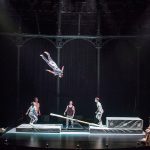

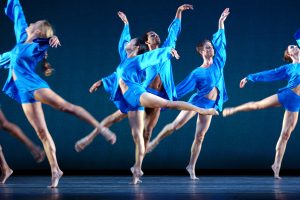

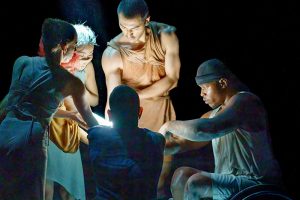
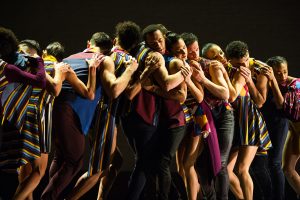

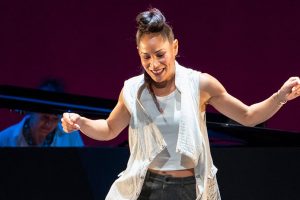

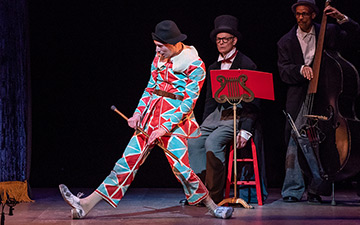
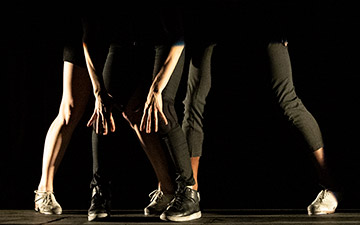
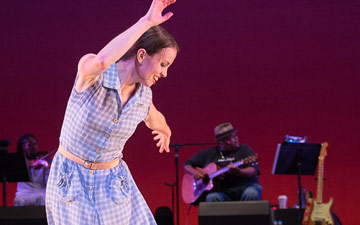
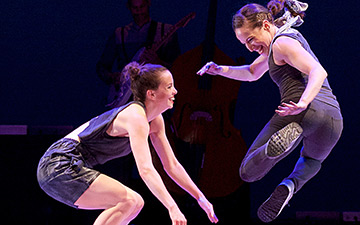
You must be logged in to post a comment.